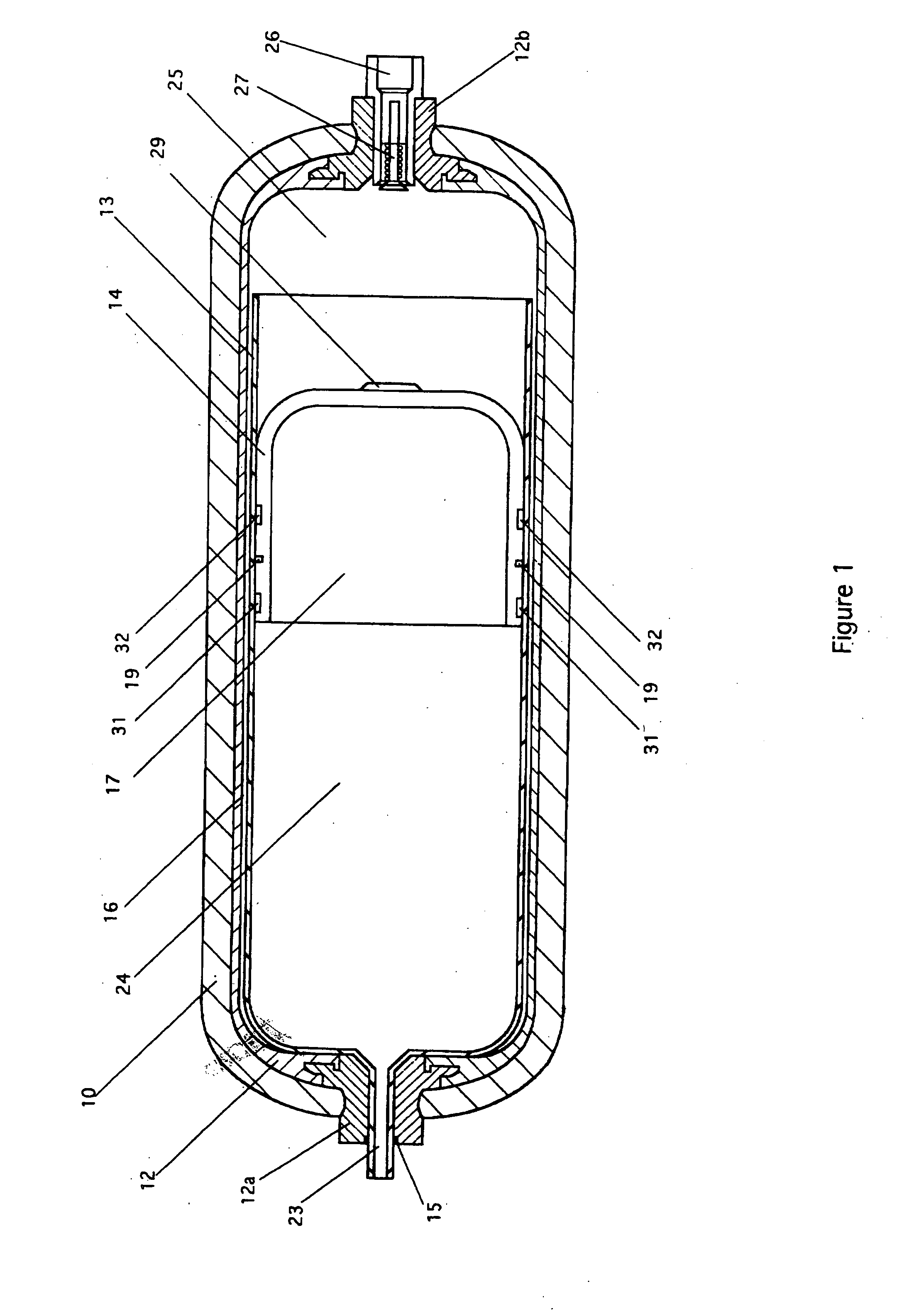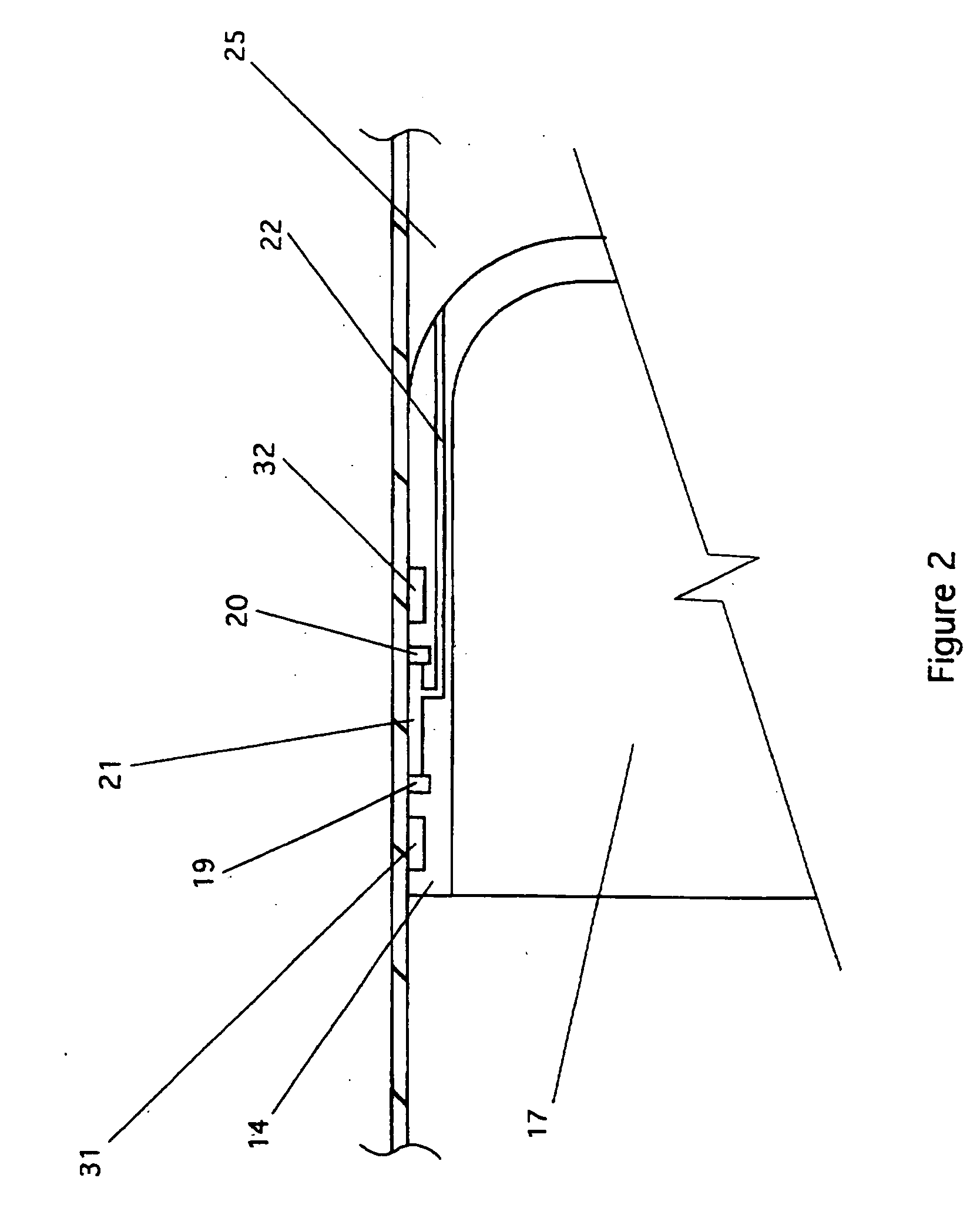A significant quantity of gas may thus over time become trapped in the low pressure accumulator.
Although it is possible to develop means to vent the gas after it collects at the fluid surface in the low pressure accumulator, the loss of this gas would nevertheless also represent a gradual depletion of the gas pre-charge of the high pressure accumulator and thus would lead to the need for occasional gas recharging (which would not be a desirable result for consumers, particularly for use in a motor vehicle application).
In addition, such gas in the low pressure accumulator may also become entrained as bubbles or gas pockets in fluid that is later pumped back out, causing the pump to experience potentially damaging effects such as
cavitation or torque fluctuations.
Further, the accumulating volume of gas reduces the effective fluid capacity of the low pressure accumulator.
Systems that operate at very high pressures are particularly vulnerable to all of these difficulties because high pressures encourage greater
dissolution of gas in the fluid, and the greater degree of pressure drop increases the rate at which gas comes out of solution.
Prior art high pressure accumulator designs therefore go to great lengths to minimize gas
dissolution and ensure
physical separation of the charge gas from the fluid.
However, thus far prior art separation means do not minimize gas dissolution to the degree that would be preferred in a commercially acceptable
hydraulic hybrid vehicle.
Some elastic bladder materials have properties that minimize
permeation, but due to the molecular nature of elastomers,
permeation cannot be eliminated completely.
In addition, permeation resistant, flexible coatings such as poly-
vinyl alcohol can be, used on the gas side of the bladder, but even with such coatings the permeation level is still unacceptable at high pressures.
However, a principal shortcoming of this approach lies in the potential for the
bellows to experience stresses and longitudinal disorientation that would soon lead to failure under a severe
duty cycle, such as would be present in an automotive power system application.
However, the interface between the piston and the inner wall of the cylinder must be controlled tightly to ensure a good seal, and the degree of dimensional tolerance necessary to ensure a good seal increases the cost of manufacturing.
Composite pressure vessels are not constructed effectively with removable end caps.
As a result of the foregoing, standard piston accumulator vessels tend to be made of thick,
high strength steel and are very heavy.
Standard piston accumulators have a much higher weight to
energy storage ratio than either steel or composite bladder accumulators, which makes them undesirable for mobile vehicular applications (as such increased weight would, for example, reduce fuel economy for the vehicle).
Therefore, despite their potentially superior gas impermeability, piston accumulators are largely impractical for vehicular applications.
Sleeve movement would fatigue the rigid fixed end of the sleeve possibly leading to leakage due to
cracking,
distortion, or wear of the sealing
gasket if one is present.
Like standard piston accumulators discussed above, these prior art piston-in-sleeve accumulators are unacceptably heavy for a hydraulic
hybrid motor vehicle application or other application where accumulator weight is a significant issue.
As such, the Tovagliaro device would still remain undesirably heavy for a hydraulic hybrid motor vehicle application, and would also entail significantly greater manufacturing cost than desired (e.g., because of complexity of the design and entailing vessel construction with both a composite envelope and metallic core and end).
In addition, the internal metallic core (or liner) used in conjunction with composite materials would be unacceptable for use in hydraulic hybrid vehicles.
The intense
duty cycle experienced by the accumulator (i.e., the extremely large number of charge-
discharge cycles, in some cases exceeding one million cycles) and the significant radial expansion of composite materials (about 1 / 10 of one inch diametrically for a 12 inch
diameter vessel at 5,000 psi pressure) together would result in expected fatigue failure of the
metal core or liner.
In addition, the flat end construction (on at least one end) of prior art piston accumulators also adds significantly to the complexity, weight and cost of the accumulator.
Disadvantages of the Prior Art
In summary, as has been explained above, despite the many years of development for accumulator designs, the prior art has thus far failed to provide a high pressure accumulator design that is lightweight, low cost, durable under stresses, and does not have permeation difficulties at high fluid pressures.
Prior art bladder accumulators have unacceptable permeation.
Prior art
metal bellows accumulators are not sufficiently durable under stresses.
Prior art piston accumulators of all types are unacceptably heavy and costly.
 Login to View More
Login to View More  Login to View More
Login to View More 


